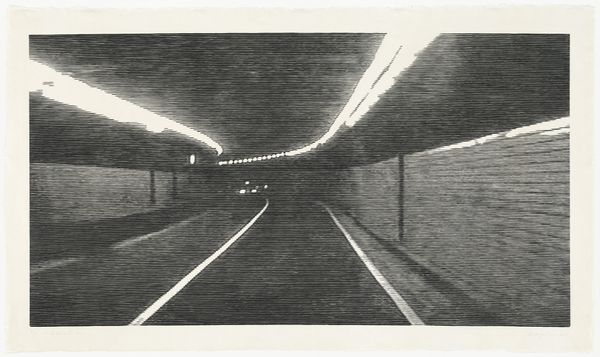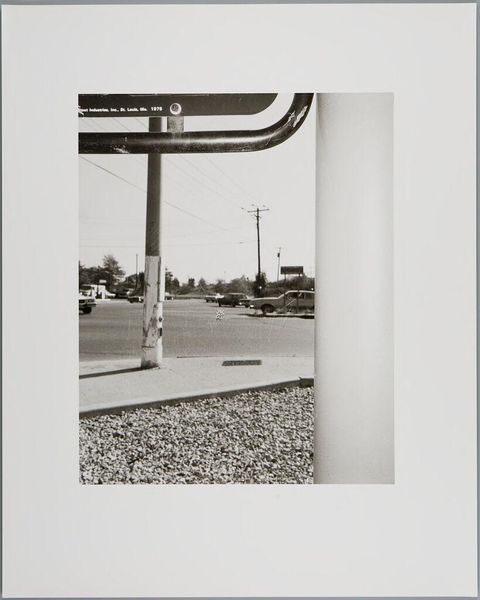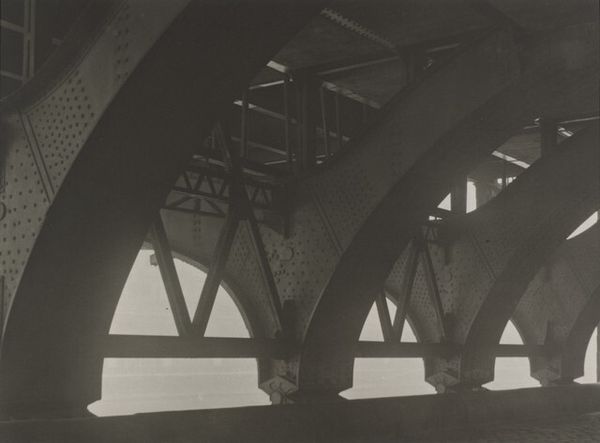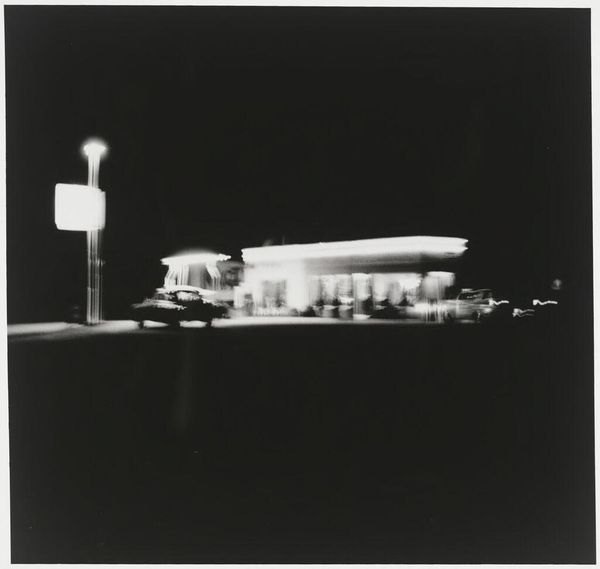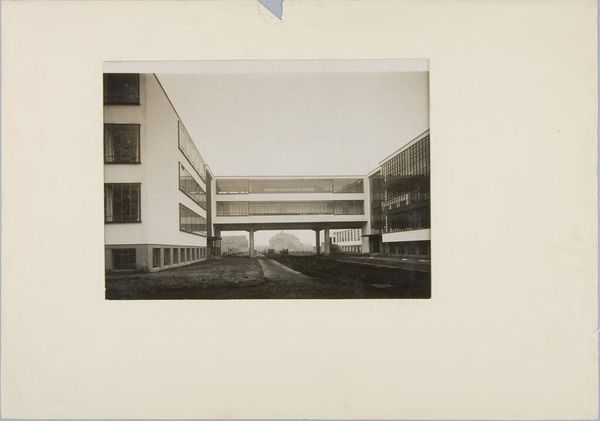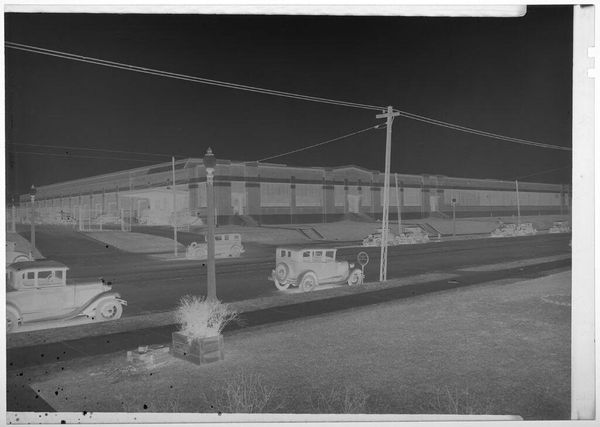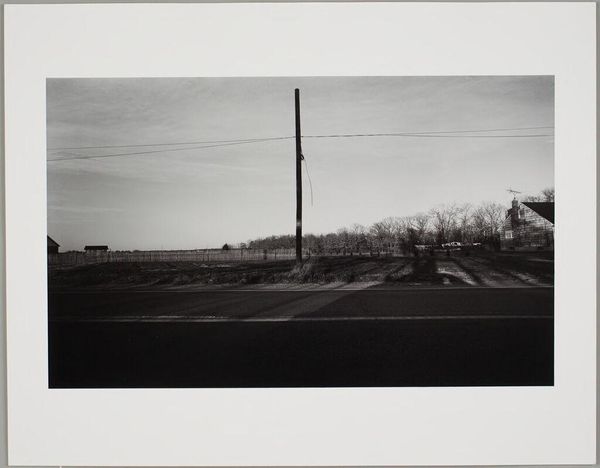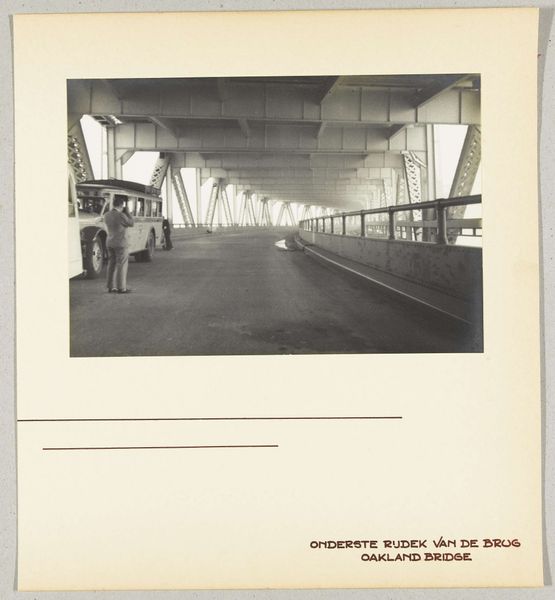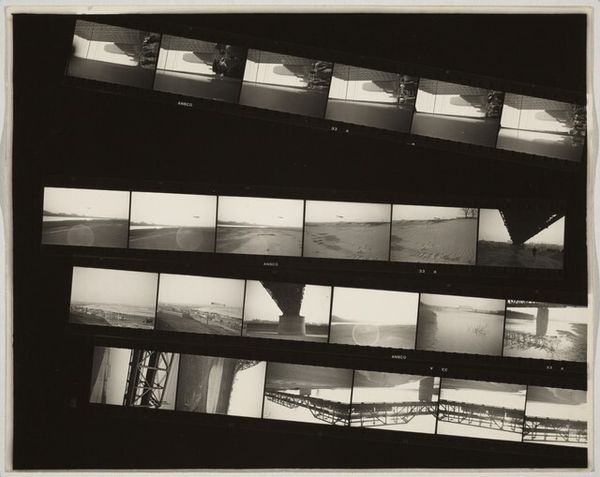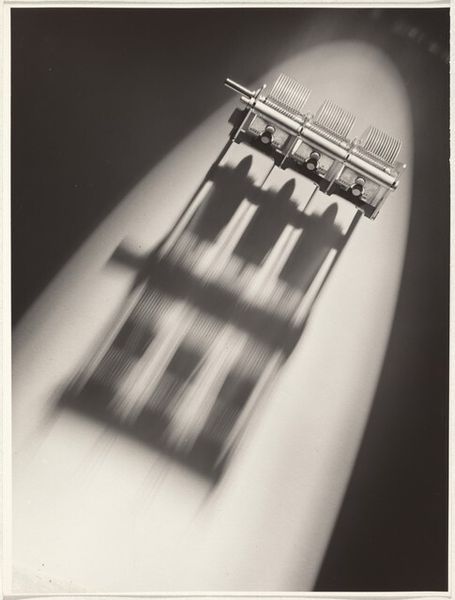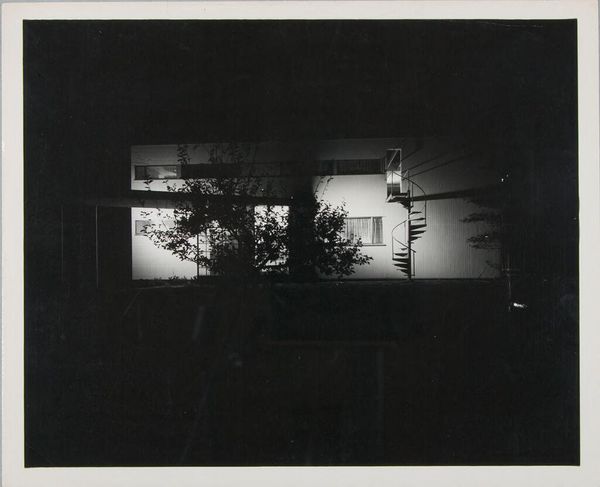
print, photography
# print
#
street-photography
#
photography
#
geometric
#
monochrome photography
#
cityscape
#
modernism
#
monochrome
Dimensions: sheet: 20.2 x 25.2 cm (7 15/16 x 9 15/16 in.)
Copyright: National Gallery of Art: CC0 1.0
Curator: Robert Frank’s black and white photograph, "Highway overpasses--Los Angeles," was taken circa 1955-1956. The composition is a dizzying array of concrete supports and roadways against a bleached-out sky. Editor: The photograph makes me feel claustrophobic. It’s as if the overpasses are a massive, oppressive structure bearing down. Curator: Interesting. To me, this work highlights modernism's fascination with geometric forms, reducing the landscape to lines, angles, and curves. Concrete as a material also evokes a sense of coldness and uniformity. Do you pick up on those vibes? Editor: Absolutely, but there's more at play here. Frank shot this while traveling across America. Highway systems represent not just progress but also racial segregation and social division—mobility for some at the expense of others, especially Black communities cut off and displaced by such infrastructure. Curator: That perspective shifts my reading significantly. It transforms the overpass into a symbolic barrier, not just in physical space but within the American dream itself. The lack of human presence amplifies this sense of alienation and isolation. Editor: Right. Consider the cultural context too. The 1950s were a time of purported prosperity, but Frank captured something far more unsettling. It’s not all sunshine and suburban bliss, it shows structural problems under the surface of everyday life. Curator: The photographic style—gritty, grainy, unglamorous—emphasizes that unsettling feeling. It deviates sharply from idealized images that were pervasive at that time, doesn't it? It creates a visual language for questioning the dominant narrative. Editor: Indeed. This image, like much of Frank’s work, serves as a visual critique. It is pushing us to confront the complex relationships between infrastructure, power, and societal realities. It shows both advancement and isolation together. Curator: This discussion has deepened my understanding. I now perceive an intersection, literally, between modernist aesthetics, social commentary, and Robert Frank’s artistic intention to reveal something far darker about the modern urban landscape. Editor: And hopefully our listeners too can use Frank’s image to interrogate what progress looks like. How are decisions made about transportation systems still impacting marginalized communities?
Comments
No comments
Be the first to comment and join the conversation on the ultimate creative platform.
